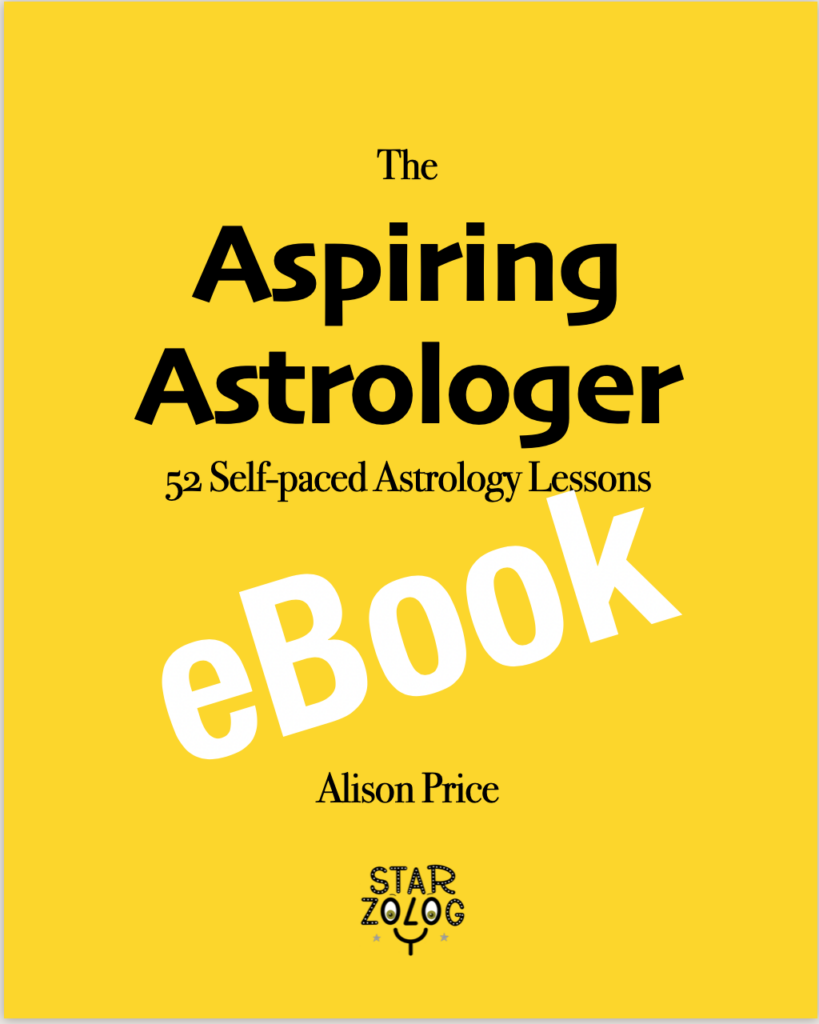This Guest Post is by UK astrologer James Hirlehey.
An Introduction to Interpreting the Four Humours
The four humours are the cornerstone of reading a chart for the health and well-being of the native, as well as determining their character and temperament from a more traditional perspective. This article will introduce the four humours and will give you some suggestions for your own study and research.
What are the four humours?
Most people have heard of the four humours in the context of Ancient Greek philosophy. They are generally taught as being related to bodily fluids in the following way:
- Sanguine – blood
- Choleric – yellow bile
- Melancholic – black bile
- Phlegmatic – phlegm
Later, an astrological student might learn that sanguine relates to the element air, choleric relates to fire, melancholic relates to earth, and phlegmatic relates to water. Then, if you study further, you might learn about temperament in the context of general personality traits of each of these humours.
Temperament and humours are far more intricate than this, however, and they form the foundation for Western Astrology.
The two polarities
The four humours are based on two polarities, hot/cold and wet/dry. The hot/cold polarity is rather straightforward. It relates to literal heat and coolness, but it also relates to activity level. Hot is active and busy, and cold is passive and calm. The wet/dry polarity is a little more complicated. It has to do with unity and separation. Wet connects and brings things together, and dry separates them and creates distinctions.
The correspondence between the humours, elements, and polarities is as follows:
- Sanguine – Air (Gemini, Libra, Aquarius) – hot and wet
- Choleric – Fire (Aries, Leo, Sagittarius) – hot and dry
- Melancholic – Earth (Taurus, Virgo, Capricorn) – cold and dry
- Phlegmatic – Water (Cancer, Scorpio, Pisces) – cold and wet
How the four humours were used historically
Before the 17th Century, the humours provided the structure by which astrology and medicine were practiced. When interpreting a Natal Chart, the astrologer would determine the temperament of the native, or that person’s natural balance between the polarities. Any medical or dietary advice would take into account the individual’s natural temperament as well as the apparent imbalance that could be determined by symptoms and by the chart that was cast to diagnose the patient.
The animals and plants that are used as food or medicine also have temperament. The way foods or plants are prepared can alter their temperament. For example, cooking heats food, baking dries it, and boiling moistens it. Different activities also alter temperament as well. For example, most exercise is heating, and rest is cooling.
Other applications of temperament
The principle of temperament also has application to the seasons, planets, and phases of the Moon. The temperament of the seasons is:
- Spring (Aries, Taurus, Gemini) – hot and wet
- Summer (Cancer, Leo, Virgo) – hot and dry
- Autumn (Libra, Scorpio, Sagittarius) – cold and dry
- Winter (Capricorn, Aquarius, Pisces) – cold and wet
The sign correspondences with the seasons are based on the Northern Hemisphere. It could be that these sign correspondences are reversed in the Southern Hemisphere. This is a topic that is wide open for astrological research.
The planetary temperament correspondences are not uniform in traditional sources. In William Lilly’s Christian Astrology, they are listed as follows:
- Saturn – melancholic, cold and dry
- Jupiter – sanguine, hot and wet
- Mars – choleric, hot and dry
- The Sun – hot and dry
- Venus – phlegm with blood, temperately cold and wet
- Mercury – variable according to the other planets nearby, but alone, melancholic, cold and dry
- The Moon – phlegmatic, cold and wet
The temperament of the phases of the Moon are as follows:
- New Moon to 1st Quarter Moon – hot and wet
- 1st Quarter Moon to Full Moon – hot and dry
- Full Moon to 3rd Quarter Moon – cold and dry
- 3rd Quarter Moon to New Moon – cold and wet
Incorporating the Four Humours in Chart Interpretation
The easiest way to begin incorporating the four humours is to use the two polarities to take the temperature of the chart, as it were. There are various methods for calculating temperament, but a very simple approach is to just count the planets by element.
We can try this with the chart of the famous celebrity and talk show host, Oprah Winfrey:

Every astrologer needs to decide for themselves what planets and chart points to use, but for this example, let’s use the Traditional Planets, the Ascendant and the Midheaven.
- Sun – Aquarius (Air), hot and wet
- Moon – Sagittarius (Fire), hot and dry
- Mercury – Aquarius (Air), hot and wet
- Venus – Aquarius (Air), hot and wet
- Mars – Scorpio (Water), cold and wet
- Jupiter – Gemini (Air), hot and wet
- Saturn – Scorpio (Water), cold and wet
- Ascendant – Virgo (Earth), cold and dry
- Midheaven – Gemini (Air), hot and wet
By a simple count, we have 6 hot/3 cold, 7 wet/2 dry. By this count, Oprah Winfrey is hot, meaning she likes to be busy and active. Hot people also tend to be more extroverted than cold people. She is also very wet. This means that she tends to see how things and people are alike, and that she likes to bring people together.
As you are experimenting with temperament, you can try adding other things into the mix and see what happens. For example, you may want to add in the season of the Sun, the phase or the Moon, and the Part of Fortune. If you do that, you get:
- Season – Winter, cold and wet
- Phase of Moon – 3rd Quarter, cold and wet
- Part of Fortune – Scorpio, water, cold and wet
Adding these three into the mix would make her even in the hot/cold polarity 6/6 and even more wet with a score of 11/2.
If you want to study and experiment further, there are many other formulas that have been used for calculating temperament in the astrological tradition. As an aspiring astrologer, it is good practice to play with different planets and chart points, and perhaps try different formulas to see what seems to yield the most accurate results for you.
When experimenting with new techniques, the best practice is to start with your own chart, as you know the most about yourself. Then branch out to look at the charts of people you know well, like your friends and family. This way you can see for yourself if the four humours are useful to you in interpreting a chart,
Conclusion
In this article, we have looked at the four humours and the principles behind them. We have also looked at how they were used historically and have given suggestions for how to begin to incorporate them into your own chart analyses. Hopefully, this will give you the tools you need to start experimenting with the four humours on your own.

James Hirlehey is a part-time astrologer at numerologysign.com and spiritual guide from the UK. He has been fascinated with astrology and divination from a young age, and his love for all things spiritual has only increased over time.



